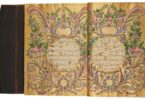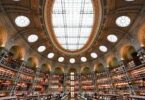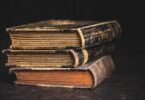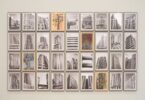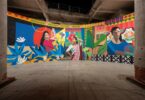Monitoring Desk
Ramallah Art Fair runs until February 15
Saher Nassar — ‘The Eternal’
Nassar worked as an illustrator and graphic designer before starting his career as an artist, and those influences remain clear in his work, particularly in his pop-art pieces. In “The Eternal,” Nassar represents the iconic symbol of Palestine, Handala. Originally created by the late political cartoonist Naji Al-Ali, Handala is a 10-year-old boy, usually pictured from behind, with his arms crossed behind his back. The image has grown to be a widely used representative of Palestine and its people, symbolizing resistance to — and rejection of — the occupation. Nassar, however, tackles it somewhat differently, with a knowing twist.
Alaa Attoun — ‘Scene 1’
In the works he has provided for this show, Attoun moves away from the emotionally charged hyperrealist pencil drawings for which he is arguably best known into performance photography — which seems in many ways like a natural progression. For this series, titled “Scene,” Attoun visited three locations in Jerusalem where Palestinian families have been displaced from their homes to stage his surreal, theatrical shots.
Alaa Albaba — ‘The Camp III’
Albaba is well-known for works depicting the lives of refugees and refugee camps. For example, the show brochure explains: “During his residency in Borj Alshamali Refugee Camp in Lebanon, he produced sketches and murals about the Houla massacre in Syria based on real stories.” And his Fish Path project consisted of 18 murals in Palestine, Lebanon and Jordan which used fish “as a representation of Palestinian refugees who are longing to return to their villages next to the sea.” Albaba resides in the Alamari Refugee Camp in Ramallah, where he has established an artist’s studio. His work for this show focuses on that camp’s sprawl, and contrasts it with the modern residential and commercial areas that surround it.
Fouad Agbaria — ‘Resisting Decomposition III’
The Palestinian landscape is “the most prominent theme in this show,” according to organizers Zawyeh Gallery. Fouad Agbaria’s impressionistic series “Resisting Decomposition” is just one example, and the works also tackle another prominent theme, resistance, through symbols including the cactus and the olive tree. Using such plants also references the deep-rooted connection that so many Palestinians have to their homeland.
Khaled Hourani — ‘Manaakh’
Hourani — a native of Hebron — is a well-respected figure in the Palestinian art scene, for his work as a curator and writer as well as for his award-winning art. As a former general director of the Fine Arts Department in the Palestinian Ministry of Culture, his inclusion in the art fair shows the organizer’s commitment to including up-and-coming artists alongside their more-established counterparts. In “Manaakh,” the brochure explains, Hourani “wanted to highlight the threat of global warming” and “showcases the world hanging by a thread, mimicking the fragility of a Christmas ornament.”
Ruba Salameh – ‘Creatures of Regression II’
Salameh was born in Nazareth in 1985. Throughout her career, she has used a variety of mediums to address “questions of land, geographies, displacement, nationalism and in-between temporalities in an attempt to contemplate … daily life, which in many cases leads to a state of dystopia, using cynicism and irony as tools.” Her “Creatures of Regression” series, from which this work is taken, is “inspired by her psychoanalytic observation on children’s behavior, (particularly) displaying jealousy towards younger siblings,” the organizers say.
Courtesy: (Arabnews)

